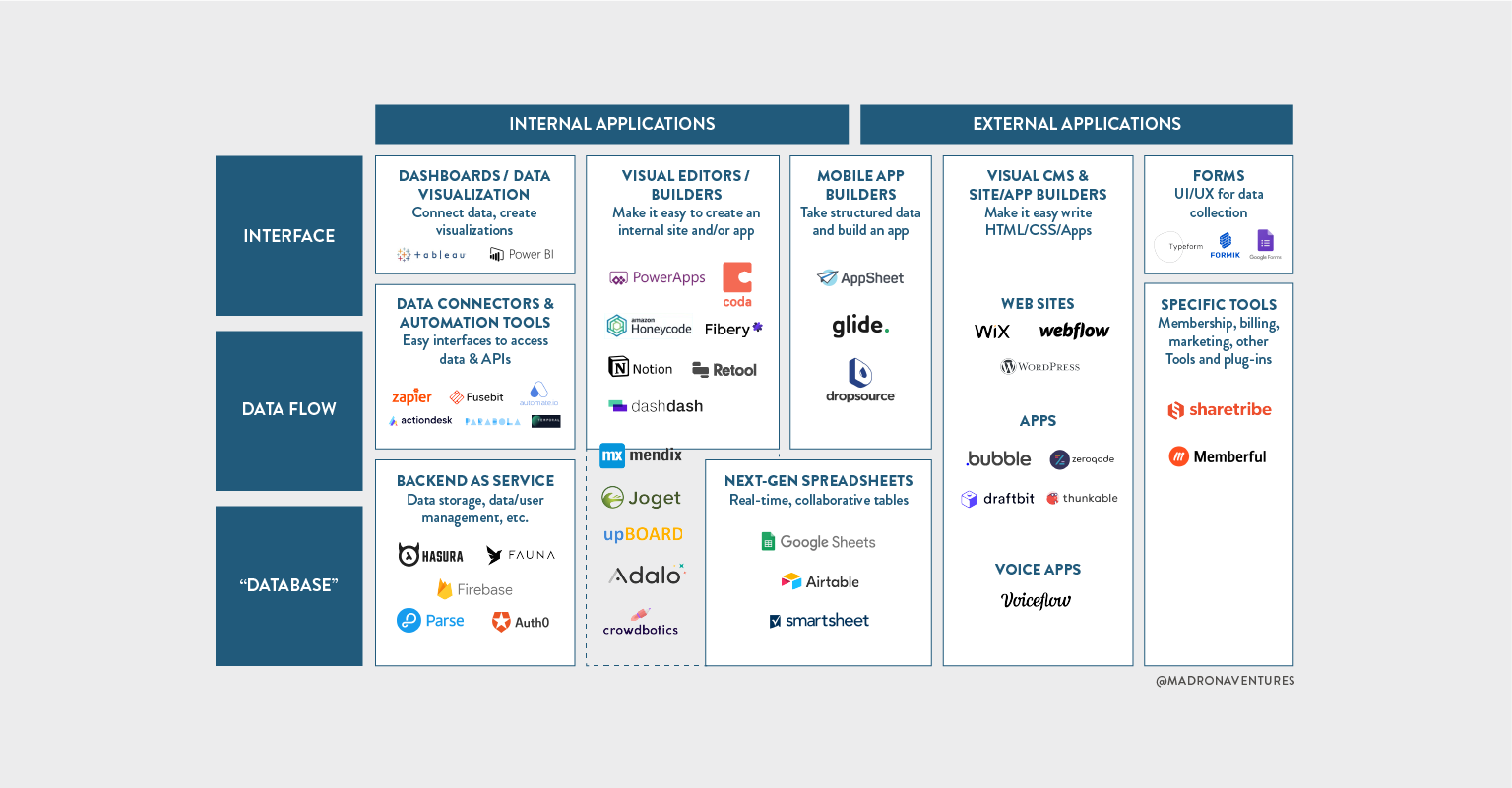No-Code Open System Database Creation: Streamline Complicated Development Jobs
No-Code Open System Database Creation: Streamline Complicated Development Jobs
Blog Article
A Comprehensive Guide to Executing Scalable Data Sources Without the Demand for Coding Knowledge
In the modern landscape of information administration, the capability to execute scalable data sources without coding experience is coming to be progressively important for organizations of all sizes. This guide intends to light up the process, concentrating on easy to use tools and user-friendly interfaces that demystify data source setup. By checking out crucial functions, reliable strategies for execution, and finest practices for continuous administration, we will certainly resolve just how also non-technical customers can confidently navigate this facility terrain. What are the crucial components that can absolutely encourage these individuals to utilize scalable databases efficiently? The responses may redefine your technique to information management.
Comprehending Scalable Databases
In the realm of modern-day data management, scalable databases have actually arised as a vital solution for organizations seeking to manage increasing quantities of information efficiently. These databases are created to fit development by enabling the seamless addition of resources, whether via straight scaling (including much more devices) or upright scaling (updating existing machines) This versatility is crucial in today's fast-paced digital landscape, where data is generated at an extraordinary price.
Scalable data sources commonly utilize dispersed architectures, which make it possible for data to be spread out across several nodes. This circulation not just improves performance but additionally provides redundancy, making certain data schedule also in case of equipment failures. Scalability can be an essential aspect for various applications, consisting of e-commerce systems, social media sites networks, and huge data analytics, where user demand can vary significantly.
Furthermore, scalable databases frequently feature durable data consistency models that stabilize efficiency and dependability. Organizations should consider their specific requirements, such as read and write rates, information stability, and fault tolerance when choosing a scalable database remedy. Eventually, understanding the underlying concepts of scalable data sources is necessary for services aiming to thrive in a progressively data-driven globe.
Trick Features to Look For
When reviewing scalable databases, a number of essential attributes are paramount to ensuring optimal efficiency and integrity. Most importantly, take into consideration the style of the data source. A dispersed architecture can enhance scalability by permitting data to be saved throughout multiple nodes, assisting in seamless data accessibility and processing as demand increases.
Another crucial function is information dividing, which makes it possible for reliable monitoring of huge datasets by splitting them into smaller sized, extra manageable items (no-code). This strategy not only boosts performance yet additionally simplifies resource allowance
Furthermore, search for robust replication capacities. This feature makes certain information redundancy and high accessibility, reducing downtime during upkeep or unexpected failings.
Performance surveillance devices are also necessary, as they provide real-time understandings into system health and operational effectiveness, enabling prompt modifications to maintain optimum efficiency.

User-Friendly Data Source Equipment
Simpleness is a critical component in the style of easy to use data source devices, as it improves ease of access for users with differing degrees of technical expertise. no-code. These devices prioritize intuitive interfaces, making it possible for individuals to develop, handle, and question data sources without requiring considerable shows knowledge
Trick features commonly consist of drag-and-drop functionality, aesthetic data modeling, and pre-built design templates that simplify the arrangement procedure. Such devices frequently offer guided tutorials or onboarding procedures that promote individual engagement and lower the discovering curve. In addition, smooth combination with preferred data sources and services guarantees that individuals can conveniently import and export information, additionally simplifying operations.

Furthermore, robust support and community sources, such as forums and paperwork, enhance the user experience by giving aid when needed. In general, straightforward database tools encourage companies to harness the power of scalable databases, making information monitoring available to every person included.
Step-by-Step Application Overview
How can organizations efficiently apply scalable data sources to fulfill their growing information needs? The process begins with recognizing certain information demands, consisting of the volume, variety, and velocity of data that will be processed. Next, companies ought to review easy to use database devices that use scalability functions, such as cloud-based services or handled data source services.
When the best tool is selected, the following step involves setting up the database setting. This includes establishing instances, specifying individual authorizations, and establishing information structures that straighten with service objectives. Organizations needs to then move existing data into the new system, making certain information stability and very little disruption to procedures.
Post-migration, carrying out comprehensive screening is critical; this includes performance testing under various lots conditions to ensure the system can take care his comment is here of future development - no-code. In addition, it is important to train staff on the data source administration user interface to assist in smooth use
Best Practices for Administration
Reliable management of scalable data sources requires a strategic method that focuses on ongoing surveillance and optimization. To accomplish this, organizations ought to apply durable monitoring tools that provide real-time insights into database efficiency metrics, such as question response times, resource application, and deal throughput. Routinely evaluating these metrics can aid recognize bottlenecks and locations for enhancement.

Routine back-ups and disaster recuperation strategies are important to secure information honesty and schedule. Establishing a routine for checking these backups will certainly make sure a dependable recovery process in situation of an unforeseen failing.
In addition, performance tuning must be a constant process. Changing indexing methods, maximizing questions, and scaling resourcesâEUR" whether up and down or horizontallyâEUR" will aid keep optimal performance as usage demands develop.
Finally, cultivating a society of expertise sharing among staff member will certainly enable continual discovering and adaptation, making sure that the administration of scalable databases stays efficient and efficient with time.
Verdict
Finally, the implementation of scalable databases can be efficiently accomplished without coding proficiency through the usage of intuitive interfaces and easy to use devices. By sticking to the detailed approaches for configuration, information migration, and performance screening, individuals can browse the complexities of database administration effortlessly. Highlighting finest methods for ongoing upkeep and partnership more boosts the ability discover this to handle scalable databases successfully in a quickly developing data-driven atmosphere.
In the modern landscape of information monitoring, the capability to execute scalable databases without coding competence is becoming increasingly necessary for companies of all dimensions.In the world of modern-day information administration, scalable databases have actually arised as a vital option for companies seeking to take care of raising quantities of information efficiently.Furthermore, scalable data sources commonly include robust data consistency versions that stabilize efficiency and dependability.Just how can companies properly carry out scalable databases to meet their expanding data needs? Next off, organizations should review straightforward data source tools that supply scalability attributes, such as cloud-based remedies or managed data source solutions.
Report this page